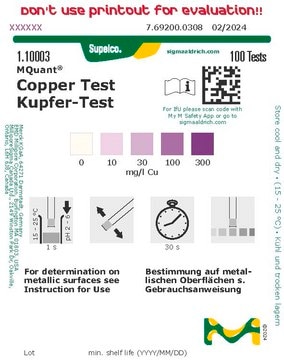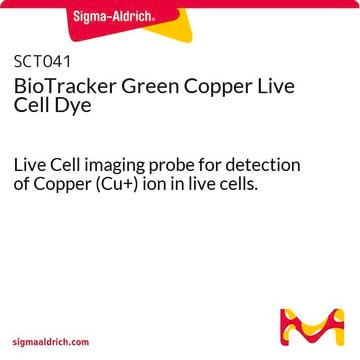MAK127
Copper Assay Kit
sufficient for 250 colorimetric tests
Sinônimo(s):
Copper Test Kit
About This Item
Produtos recomendados
uso
sufficient for 250 colorimetric tests
método de detecção
colorimetric
doença(s) relevante(s)
orthopedic diseases; aging/geriatric diseases; hematological disorder; gastrointestinal diseases; neurological disorders; dermatological diseases
temperatura de armazenamento
2-8°C
Categorias relacionadas
Descrição geral
Aplicação
Características e benefícios
Adequação
Princípio
Palavra indicadora
Danger
Frases de perigo
Declarações de precaução
Classificações de perigo
Aquatic Acute 1 - Aquatic Chronic 1 - Eye Dam. 1 - Met. Corr. 1 - Skin Corr. 1A - STOT SE 3
Órgãos-alvo
Respiratory system
Código de classe de armazenamento
8B - Non-combustible corrosive hazardous materials
Classe de risco de água (WGK)
WGK 3
Ponto de fulgor (°F)
Not applicable
Ponto de fulgor (°C)
Not applicable
Certificados de análise (COA)
Busque Certificados de análise (COA) digitando o Número do Lote do produto. Os números de lote e remessa podem ser encontrados no rótulo de um produto após a palavra “Lot” ou “Batch”.
Já possui este produto?
Encontre a documentação dos produtos que você adquiriu recentemente na biblioteca de documentos.
Nossa equipe de cientistas tem experiência em todas as áreas de pesquisa, incluindo Life Sciences, ciência de materiais, síntese química, cromatografia, química analítica e muitas outras.
Entre em contato com a assistência técnica











